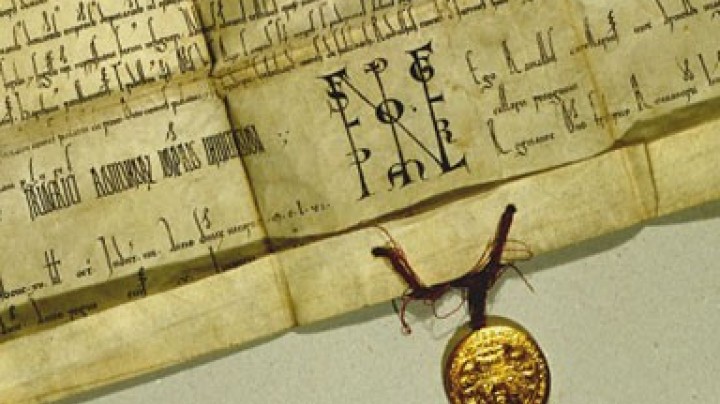Frederick III, the hapless anti-king
After the situation in the Empire threatened to become increasingly unsettled in the face of numerous proxy wars, direct military conflict between the two rival kings had become inevitable.
The ultimate decision in the power struggle fell on 28 September 1322 in the Battle of Mühldorf am Inn. This took an unfortunate course: Frederick’s brother Leopold failed to reach the battle field with his contingents of troops in time, which meant that Frederick’s army was in the minority. A defeat ensued, made worse by the capture of Frederick and his brother Henry.
Frederick was taken to Trausnitz Castle in the Upper Palatinate and was now a valuable pawn in Louis’s efforts to consolidate his rule. The latter succeeded in forcing the Habsburgs to hand over the imperial regalia. However, he did not manage to achieve unequivocal confirmation of his unlimited powers as king.
Following diplomatic interventions Louis and Frederick eventually came to an agreement: the former set Frederick free after two and a half years of incarceration after Frederick relinquished his claims to the throne. In return Louis promised the enfeoffment of the Habsburgs with Austria and Styria together with the hand in marriage of one of his daughters to one of Frederick’s future sons. The most important precondition for this compromise was the agreement of Frederick’s brothers.
However, Frederick’s brother Leopold opposed the agreement vehemently. Here again Leopold’s position as the opinion leader among the brothers is evident. Having failed to get this compromise agreement accepted within the family, true to his word Frederick returned to captivity – conduct that in the romanticizing historiography of the nineteenth century was extolled as an expression of the highest chivalry.
Eventually a compromise was found whereby Louis recognized Frederick as co-regent in September 1325. However, this interesting constellation had no great effect on practical politics as the sudden death of Leopold only a few months later deprived Frederick of his mastermind. Frederick withdrew from the political stage and left the field to Louis, now Emperor Louis IV ‘the Bavarian’. It was to be another three centuries until the Habsburgs had consolidated their position to a degree that they were able to regain the imperial crown.













